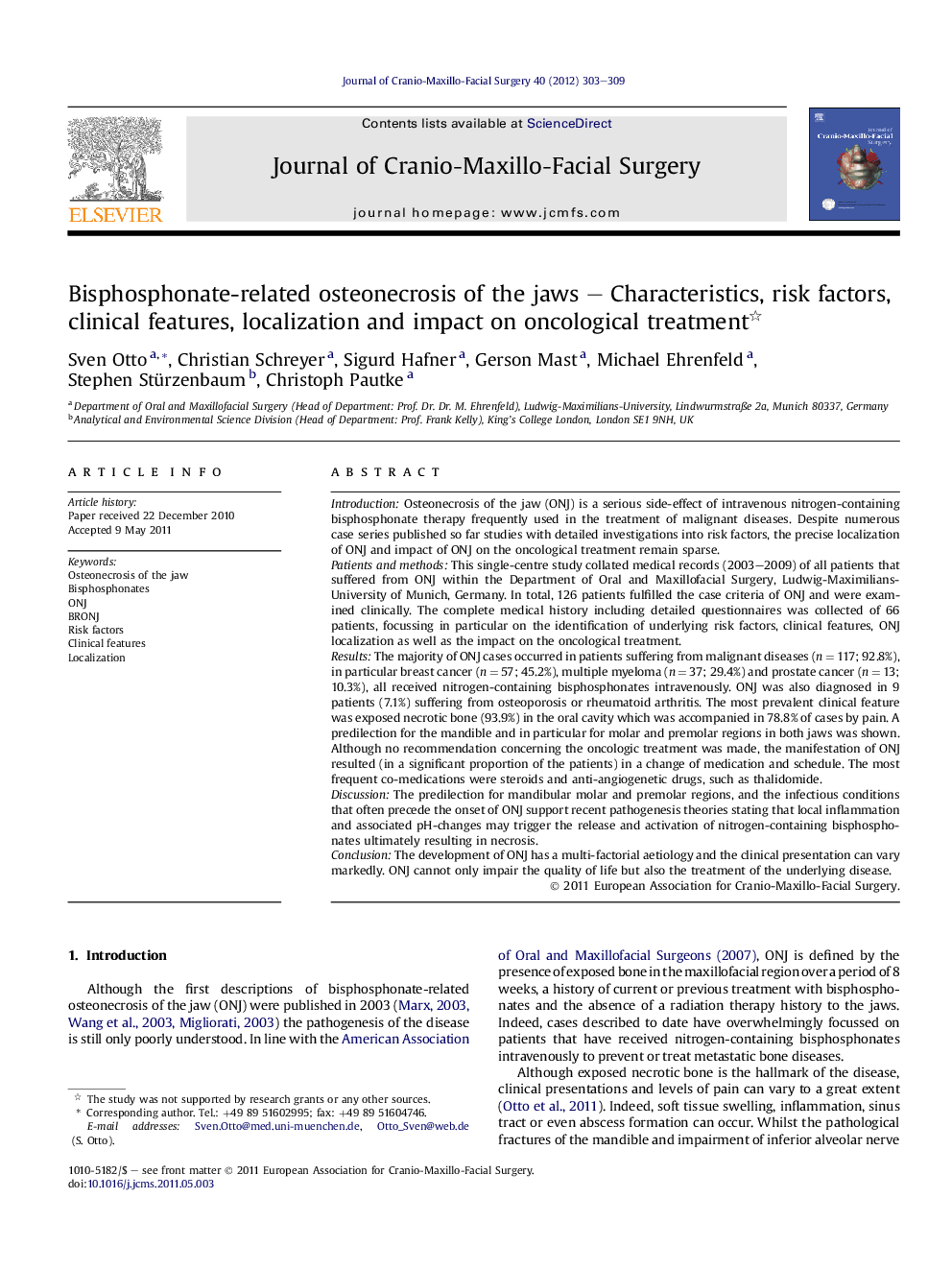| کد مقاله | کد نشریه | سال انتشار | مقاله انگلیسی | نسخه تمام متن |
|---|---|---|---|---|
| 3143127 | 1196806 | 2012 | 7 صفحه PDF | دانلود رایگان |

IntroductionOsteonecrosis of the jaw (ONJ) is a serious side-effect of intravenous nitrogen-containing bisphosphonate therapy frequently used in the treatment of malignant diseases. Despite numerous case series published so far studies with detailed investigations into risk factors, the precise localization of ONJ and impact of ONJ on the oncological treatment remain sparse.Patients and methodsThis single-centre study collated medical records (2003–2009) of all patients that suffered from ONJ within the Department of Oral and Maxillofacial Surgery, Ludwig-Maximilians-University of Munich, Germany. In total, 126 patients fulfilled the case criteria of ONJ and were examined clinically. The complete medical history including detailed questionnaires was collected of 66 patients, focussing in particular on the identification of underlying risk factors, clinical features, ONJ localization as well as the impact on the oncological treatment.ResultsThe majority of ONJ cases occurred in patients suffering from malignant diseases (n = 117; 92.8%), in particular breast cancer (n = 57; 45.2%), multiple myeloma (n = 37; 29.4%) and prostate cancer (n = 13; 10.3%), all received nitrogen-containing bisphosphonates intravenously. ONJ was also diagnosed in 9 patients (7.1%) suffering from osteoporosis or rheumatoid arthritis. The most prevalent clinical feature was exposed necrotic bone (93.9%) in the oral cavity which was accompanied in 78.8% of cases by pain. A predilection for the mandible and in particular for molar and premolar regions in both jaws was shown. Although no recommendation concerning the oncologic treatment was made, the manifestation of ONJ resulted (in a significant proportion of the patients) in a change of medication and schedule. The most frequent co-medications were steroids and anti-angiogenetic drugs, such as thalidomide.DiscussionThe predilection for mandibular molar and premolar regions, and the infectious conditions that often precede the onset of ONJ support recent pathogenesis theories stating that local inflammation and associated pH-changes may trigger the release and activation of nitrogen-containing bisphosphonates ultimately resulting in necrosis.ConclusionThe development of ONJ has a multi-factorial aetiology and the clinical presentation can vary markedly. ONJ cannot only impair the quality of life but also the treatment of the underlying disease.
Journal: Journal of Cranio-Maxillofacial Surgery - Volume 40, Issue 4, June 2012, Pages 303–309